The first piece of art I ever bought was a small painting of a dead DJ. Walking down the street in New York one day, I came across a man selling small- and medium-sized portraits of slain hip-hop artists, casually displayed on the sidewalk. They were painted in bright, simple colors. The one that caught my eye was Tribute to Jam-Master Jay, which I assumed to be the title because it was written in thick gold paint on the lower left corner of the painting. Months before, Jay, the DJ for the pioneering rap crew RUN-DMC, was tragically shot and killed inside a recording studio in Queens. In the work he once again stood proudly, wearing the iconic black T-shirt, fedora hat, and, around his neck, the standard-issue gold chain, thick as a boa constrictor. I bought the painting for thirty dollars.
It took me months to figure out where to hang it in my bare apartment. There was plenty of wall space: nothing was up. But no place felt right. One wall was too bumpy and another wall was too water-damaged. The kitchen area looked too cramped and the space next to the worktable was too dark. Jam-Master Jay had nowhere to go. I had no clue as to where the painting could fit in my apartment. Only much later did I realize why. It had never occurred to me that art belonged in a home.
*
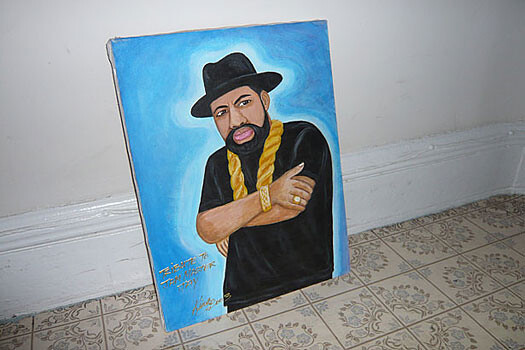

Things belong in a home. Tables and radios and stuff you find outside. But art? I have more work up now. And the truth is that art exists in countless homes large and small. Art is not diminished by its place in a home. On the contrary, some art glows anew in the presence of other things, like a strange light bulb that draws invisible energy from the inert matter around it, to radiate from within its essential shape. Not all art does this. But the works that do not are no worse for it. They stand, or lean, or hang with little fanfare, next to the coat rack, or the bookcase, or over the couch, waiting to be noticed. The constellation of things in a home—including artworks—creates a network of uses and meanings that connects us to a place and grounds us in a sensible reality. Things are things because they help us belong in the world, even though their place in our lives can sometimes dispossess us of the sense of being at home with ourselves.
Art is made of things: paints, paper, video projectors, steel, and so on. The things used in making art ground it in a material reality, without which art would simply be an unrealized wish. Even works that claim to be dematerialized need material support to realize themselves. Performance, for instance, may not see itself as composed of things. But the focus of the work needs a material frame to condense all the elements into an event. The space, the performers, and the props (if any) all work to make performance appear as experience. Art uses things to make its presence felt. But art is not itself a thing.
If art is, in truth, art, it feels as if it is too concrete to be mere appearance, but not concrete enough to exist as mere reality. In other words, art is more and less than a thing. And it is this simultaneous expression of more-ness and less-ness that makes what is made art.
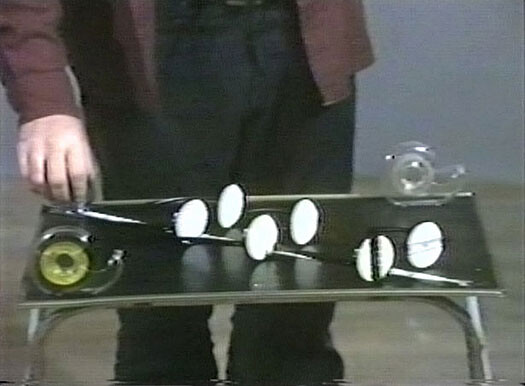

How is art less than a thing? A thing, like a table, helps us belong in the world by taking on the essential properties of what we want in a table. It does not matter whether it is made of wood or steel, or whether it has one leg or four. As long as it is endowed with purpose, so that a table inhabits its “table-ness” wholly, to not only give us a surface on which to eat, or write, or have sex, but also to substantiate that purpose as the external embodiment of our will. In a sense, a thing is not itself until it contains what we want. Once it becomes whole, a thing helps us differentiate it from all that it is not. A chair may act like a table, enabling us in a pinch to do all the things a table can. But it is only acting. A thing’s use is external to its nature. And what is essential to a table’s nature is that all the parts that make up a table become wholly a table, and not a chair, or a rose, or a book, or anything else.
In art, the parts do not make a whole, and this is how a work of art is less than a thing. Like the perfect crime or a bad dream, it is not apparent at all how the elements come together. Yet they nevertheless do, through composition, sometimes by chance, so that it appears as if it were a thing. But we know better, since it never feels solid or purposeful enough to bear the weight of a real thing. This is not to say that art does not really exist or that it is just an illusion. Art can be touched and held (although people usually prefer you not to). It can be turned on or off. It can be broken. It can be bought and sold. It can feel like any other thing. Yet in experiencing art, it always feels like there is a grave misunderstanding at the heart of what it is, as if it were made with the wrong use in mind, or the wrong tools, or simply the wrong set of assumptions about what it means to exist fully in the world.
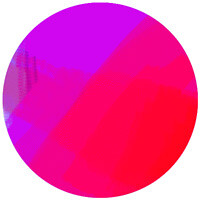

This is how art becomes art. For what it expresses most, beyond the intention of the maker, the essence of an idea, an experience, or an existence, is the irreconcilability of what it is and what it wants to be. Art is the expression of an embodiment that never fully expresses itself. It is not for lack of trying. Art, like things, must exist in a material reality to be fully realized. But unlike things, art shapes matter—which gives substance to material reality—without ever dominating it. All matter absorbs the manifold forces that have influenced how it came to be, and the uses and values it has accrued—and emanates the presence of this history and its many meanings from within. In a sense, form is just another word for the sedimented content that smolders in all matter. Art is made with sensitivity to and awareness of this content. And the more the making becomes attenuated, the more art binds itself to the way this content already determines the reality of how matter exists in the world. This reality, or nature, is the ground art stands on to actualize its own reality: a second nature. But it is never real enough, since the first nature will never wholly coincide with the second.
What art ends up expressing is the irreconcilable tension that results from making something, while intentionally allowing the materials and things that make up that something to change the making in mind. This dialectical process compels art to a greater and greater degree of specificity, until it becomes something radically singular, something neither wholly of the mind that made it, nor fully the matter from which it was made. It is here that art incompletes itself, and appears.
The irony is that because it cannot express what it truly wants to be, art becomes something greater and more profound. Its full measure reaches beyond its own composition, touching but never embracing the family of things that art ought to belong to, but does not, because it refuses (or is unable) to become a thing-in-itself. Instead, art takes on a ghostly presence that hovers between appearance and reality. This is what makes art more than a thing. By formalizing the ways in which objective conditions and subject demands inform and change each other over the course of its own making, a work of art expresses both process and instant at once, and illuminates their interdependence precisely in their irreconcilability. And it is as a consequence of this inner development that art becomes what it truly is: a tense and dynamic representation of what it takes to determine the course of one’s own realization and shape the material reality from which this self-realization emerges. In other words, whatever the content in whatever the form, art is only ever interested in appearing as one thing: freedom.
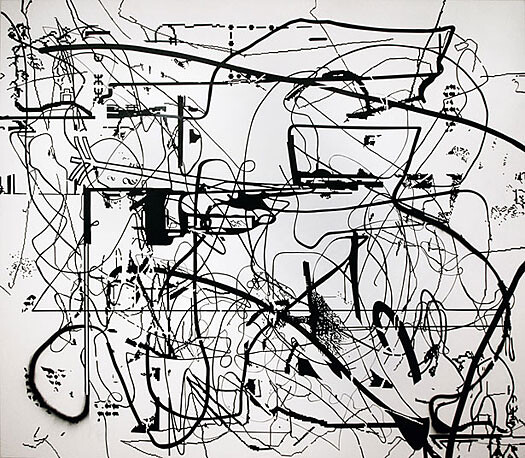

*
The death of art has been declared since at least 1826, when Georg Wilhelm Friedrich Hegel wrote that art would wither away because its role in expressing the universal spirit will be superseded by religion, and then by philosophy. In the late 1960s, Theodor W. Adorno began his book Aesthetic Theory with the following: “It is self-evident that nothing concerning art is self-evident anymore, not its inner life, not its relation to the world, not even its right to exist.”1 Philosophers (and philistines) are not the only ones to question art’s reason for being. Artists themselves have attacked it for at least the last hundred years. In the twentieth century, the true vanguard of art was neither a work nor a movement, but the death wish for art itself.


Today, it is self-evident that art is not dead. In fact, artistic production has spread into all corners of life. But even though the pronouncements of the end of art turned out not to be true, there is truth in the feeling that something in art has died. Or, at the least, in the sense that the proliferation of art has no bearing on what kind of power or potential it actually holds.
But the more an artwork responds to the exigencies of the moment, the more it gets entangled in a process of development that directs it away from its singular way of becoming. The demand to make sense of the contradictions that breed conflicts and mire social progress at every turn should be met: life ought to be more livable for the living. To its credit, the field of contemporary art today has sought to connect diverse bodies of knowledge with aesthetic concepts to conjure a kind of critical thinking in sensuous form. Art of this kind imagines itself primarily as an instrument, to be experienced as something that sharpens reflection and encourages resistance. On the other hand, contemporary art has advanced another kind of engagement, one that mirrors the expanded means of social, cultural, and economic production that has made life the unimaginable entanglement it is today. By using the same technologies and organizing principles employed by industries to increase production, marketing, and exchange, art attempts to give this industriousness a novel face. Here, art functions as the embodiment of an inhuman social process becoming conscious of its own legitimacy as the expression of human progress.
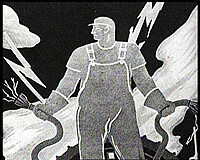

Whether as critique or reflection (or both at once), art in contemporary times has sought out a new relationship with the life it once wanted to transform from within the boundaries of its own making. In the past, the imperative to re-imagine the whole of life through art compelled it toward a rich and productive unreasonableness. No matter what forms it took on—whether it was an ever-purer expression of formal spiritualization through excessive austerity or an ever-greater earthly immanence through perverse juxtapositions—art situated itself as the social antithesis of society, not directly deducible from it and not evidently useful in it. The freedom art potentiated in the development of its own realization gave substance to the idea, especially hard to see in dark times, that we too could create the inner resources necessary to organize ourselves against the general drift of the world, in order to redirect it.
It was in reality a ridiculous idea. But in art, the only ideas worth realizing are the truly untenable ones. This is what is most dispiriting about contemporary art: it no longer represents the shape of untenability. By suppressing social and economic differences and dissolving the space that once separated things, globalization has made everything uniformly near and equally reasonable. Art, by allying itself with contemporary life, has found its purpose as a cunning system of mediation, capable of pulling into its comportment anything that exists in our social and material reality. Art exerts its power by rationalizing the elements into a vivid relationship, and emanates beauty and strength through its semblance of a synthesized whole: art becomes a thing. But this whole, which masquerades as the triumph of the artistic spirit over the disorder of things, is really the affirmation of a deadening totality that stands in for reality. Objective forces manifest in art today as subjective acts without an actual subjectivity, to express the power of inhumanity to define what is most human. In other words, the power of art is not its own. Rather, it comes from the will of a greater socio-economic authority, which uses art to merely ennoble the power it exercises over the global arrangement to which life is increasingly beholden for sustenance.
If art has any insight into life today, it is that we have no other interior than the world. And the relative ease with which the things that make up our reality now interconnect and cohere in art without any sense of inner tension or contradiction reflects the momentous pressure exerted by contemporary life to make everything join and work together like the best and worst of contemporary art itself. A numbing peace has been achieved. Art and life would rather belong to the world than be free in it.
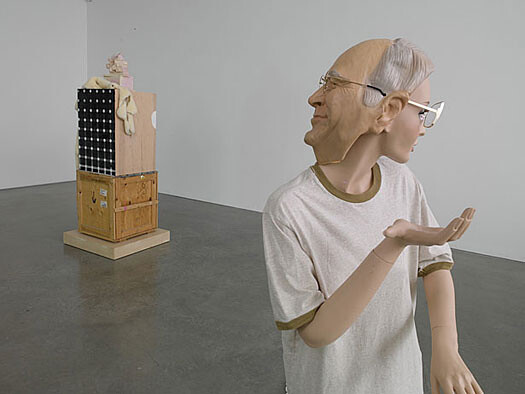

*
It seems that buying anything today usually involves giving away more than money. When I bought a fan at a store recently, the clerk not only took my cash, but also wanted to know my first, middle, and last name, mailing address, home phone number, cell phone number, e-mail address, birth date, and my favorite holiday. Becoming a member of the store means huge discounts and chances to meet other members at in-store events, the clerk told me. No thanks, I said. “It pays to belong,” he insisted, as I walked out of the store. Belonging is increasingly part of the nature of transactions. I am not a joiner, and try to ignore the offers and specials that businesses use as incentives.2 The carrot is a stick.
Businesses profit from building communities around what they sell and communities grow by fulfilling the wants of their members, who run them with the expediency of a business. This is the feel of how things work now. And the experience of belonging is inextricably tied to this process, but in a way that blurs the distinction between sharing a commonality and owning a thing. Part of what makes contemporary life contemporary is how they are exchangeable but yet unequal. The balance is skewed towards what is yours and what is mine—in other words, the experience of ownership as the grounding for the expansion of individual connections and the development of our social reality in general. To belong today is to be possessed. In belonging we actualize ourselves by possessing what we want to possess us, and find fellow feeling from being around others who own the same properties. And by properties, I mean not only tangible things, like shovels or tangerines, but more importantly, the immaterial things that give meaning to an inner life, like ideas, or desires, or histories.
This is not the only way to belong, but it is the prevailing one. And it is clear enough that it reflects the dominance of exchange relations as the means by which the social world is being constructed and maintained. But what remains obscured is the similarity this dominion bears to a fundamentally religious concept that was made modern by a philosopher at the root of a cast of thinking, which together heralded Western modernity. If Descartes announced the birth of modern existence and a withering away of a notion of being framed by God with ergo cogito sum, and Kant established the modern notion of reason unfettered by theological constraints, it was Hegel who synthesized a modern sense of being with the autonomy of reason to produce a social and speculative philosophy that described how people could find both freedom and belonging (precisely freedom in belonging) in the social world. His work envisioned the coming of a universal union that rivaled the one promised in the “good book” if only we lived under God.
Reconciliation is the concept Hegel used to frame how belonging works, and it forms the beating heart of his thinking. Socially, it is a process that overcomes the sense of alienation that divides us from ourselves and from all the things that exist beyond the boundary of our own skin. In his approach to reconciliation, it is closely related to dialectics, the essential idea that drives Hegel’s entire philosophical system. Dialectics set forth the way in which opposites or contradictions that abound in the world can be resolved and transformed into a higher state of articulation without losing the differences that defined the separation in the first place. This higher state finds its most realized form in reconciliation, which Hegel described as the feeling of being at home in the world. It is what he means by freedom.
Like many of Hegel’s key terms, reconciliation is a secularization of a theological concept. In Christianity, it means the advent of a new and vital peace between God and humanity inaugurated by the life and death of Christ. God was made flesh in Christ, and his sacrifice restored the original relationship God enjoyed with men and women before Adam and Eve committed original sin and condemned humanity thereafter to a fallen state.
This is far from the reconciliation Hegel had in mind for modern men and women, whom he believed could no longer count on God to bring heaven to earth. But the seeds Hegel used to construct his philosophy for a more perfect union in an emerging modernity were already sown in Christian doctrine. Consider, for example, a commentary on the Psalms by Saint Augustine:
Men were held captive under the devil and served the demons, but they were redeemed from captivity. They could sell, but could not redeem themselves. The redeemer came, and gave the price; He poured forth his blood and bought the whole world. Do you ask what he bought? See what He gave, and find out what he bought. The blood of Christ is the price. How much is it worth? What but the whole world? What but all nations? (Psalms 96)
The language of salvation was already steeped in the figures of property exchange. From Saint Paul to Martin Luther, reconciliation was represented as the payment of a price, or a ransom, or as the sacrifice made for the forgiveness of a debt.
Hegel discarded the blood of Christ but kept the dialect of commerce to think through how a new reconciliation could be achieved without the intervention of holy ghosts or angels. His philosophical system amounted to a complete rethinking of how the world was created and how it would develop over time. He imagined that the animating force that turned the world was an inner necessity that emanated from all things, and which finds its fullest expression in a humanity that constantly and rationally strived for greater independence from the constraints of objective reality, and at the same time, for a grander integration within that reality. For Hegel, Spirit was an unending process and God an unyielding reason.
This is Hegel at his most modern. He placed his faith in the development of reason as the binding force that could actualize the unification between the innumerable particularities that make up individual lives and the general shape of the social world. But his modernity feels not so decidedly modern in light of how property relations, which Christian doctrine used to spell out humanity’s relationship with God (and Satan), return in Hegel as the anchor point for how we ultimately find reconciliation. By possessing property, Hegel claimed, we externalize our will through what we own and manifest an outer existence that grants us the rights and recognitions of being a member of a social order. In possessing property, one becomes individualized and socialized at the same time. Whereas in Christianity it was Christ who bought humanity out of the bondage of sin and into salvation, Hegel imagined that the power of reason had the potential to buy men and women out of alienation and into reconciliation with the world.
Hegel died in 1831. By 1844, Marx had absorbed enough of Hegel’s philosophy to begin dismantling it. His critique of private property as the power the ancien régime wielded over people transformed ownership into a form of dispossession and turned Hegel upside down. The beginning of Marxism was, among other things, a repudiation of Hegel’s worldview and the establishment of a competing philosophy that would lay the groundwork for building another kind of worldly union. And if the Marxian vision has fallen into disrepute today, Hegel’s vision has not fared much better. History cannot claim to be moving forward with more reason and less irrationality with each passing day. There is no absolute spirit compelling humanity towards an understanding of itself as the ideal embodiment of a universal rationality. And it seems that the only disciples of Hegel left are psychoanalysts from Ljubljana.
Mötley Crüe, Home Sweet Home, 1985. music video.
But even though Hegel’s aim was widely off the mark, somehow it remains true. His philosophical interpretation of how the social world works is more relevant today than the various philosophies and theories since that have sought to change it. Property relations continue to hold sway over how men and women individualize and socialize themselves in the world. A semblance of reconciliation is found, although nothing in truth feels terribly reconciled. And what Hegel foresaw as the power of reason pushing forward the development of an ever-expanding interdependency is eerily prescient. Globalization, as the rationalizing structure underlying our social and material world, has created what I call a state of belonging. This state has largely replaced the three institutional forms Hegel thought would, in concert, provide the ways and means for people to actualize themselves in a modern world: the family, the civil society, and the nation-state. Although they still exist, they are no longer grounded in the histories and experiences that once gave them substance. Conflicts that have flared up around what constitutes a family and the vocal and sometimes violent disputes about national identity and immigration are symptomatic of the ways people are reacting to the state of belonging as it uproots and transforms familial, civil, and national forms of belonging into properties that can be exchanged and possessed like any other thing. What’s more, the idea itself of community has been purged of any social bearing, and redescribed as an empty and abstract network of disembodied interests that merely reflects the dominance of consumer sovereignty over actual freedom in determining the inner and outer shape of one’s life.
That there are innumerable communities online and off for nearly every worldly difference is the most concrete expression of this state of belonging. But the innovations that have produced ever-new forms of belonging have not ushered in a new era of commonality and mutual understanding. Instead, they have created a progressively stratified sense of being in the world. For what is affirmed through community in the age of globalism is that the essential nature of belonging is not defined by the relationships established and maintained by actual living people, but by the connections made through the things that people possess, or do not possess, or want to possess, inside and out.
It seemed sensible enough for Hegel to imagine that reconciliation is the state of being at home in the world. But perhaps what he did not see coming was that the home being erected in the image of the world only had room for things to fit inside it.


This is, I have a feeling, part of the curious string of associations I had in mind when I first intuited that art does not belong in a home, namely because art is not a thing. This is a pretty unworldly belief, situated somewhere between the existence of unicorns and the coming socialist revolution. There is no real way to substantiate it, and in fact the opposite case is clearly the reality today. Art is found not only in homes and the usual places where we expect it to be, like galleries, nonprofit spaces, museums, corporate lobbies, and such. Art has appeared on the sides of buildings, on abandoned grounds, in the sky, in makeshift kitchens, on river barges, at demonstrations, in magazines, on human skin, as souvenirs, and through speakers and screens of every imaginable shape and size. Art belongs here.
This should be welcome news, especially for artists.
Still.
This only brings to mind Groucho Marx, who once said: “I don’t care to belong to any club that will have me as a member.” If art is made to belong, it seems to me that it is the poorer for it. This is especially the case when art is made to belong to art itself. Echo reconciles. By forsaking the freedom realized in its own inner development, art affirms the illusionary reconciliation brought on by the state of belonging, when in truth it holds the greater potential of expressing, in a kind of nonjudging judgment, just how unfree this belonging really is.
Art is, and has been, many things. For art to become art now, it must feel perfectly at home, nowhere.
T. W. Adorno, Aesthetic Theory, trans. Robert Hullot-Kentor (Minneapolis: University of Minnesota Press, 1998), 1.
Sometimes I humor the cashier by filling out the membership form with Dick Cheney’s name and his last known home address in Virginia.
Category
Subject
A version of this text first appeared in The Return of Religion and Other Myths: A Critical Reader in Contemporary Art, edited by Maria Hlavajova, Sven Lütticken, and Jill Winder (Utrecht and Rotterdam: BAK & post editions, 2009). The Return of Religion and Other Myths is the third publication in the BAK Critical Reader Series.
